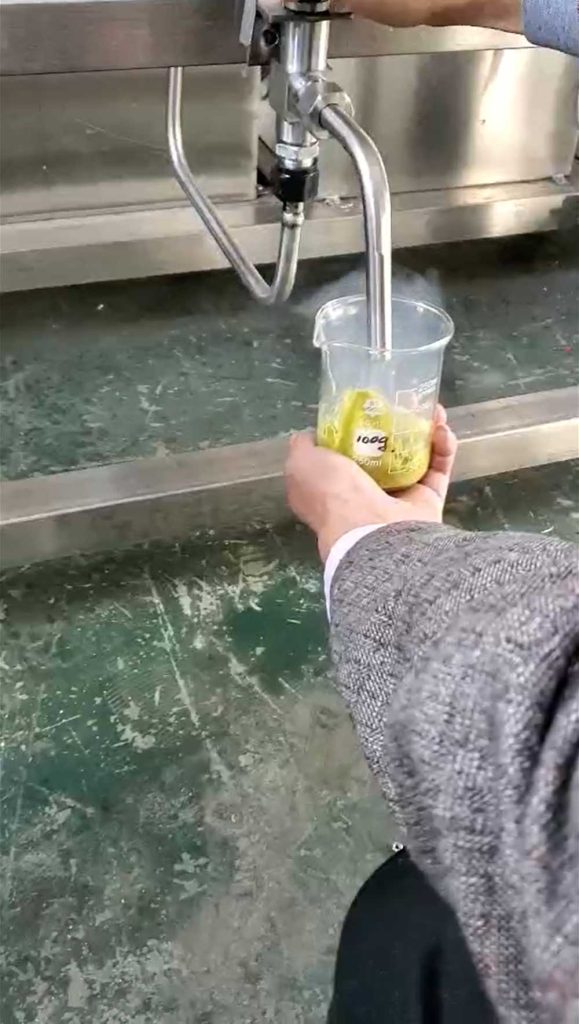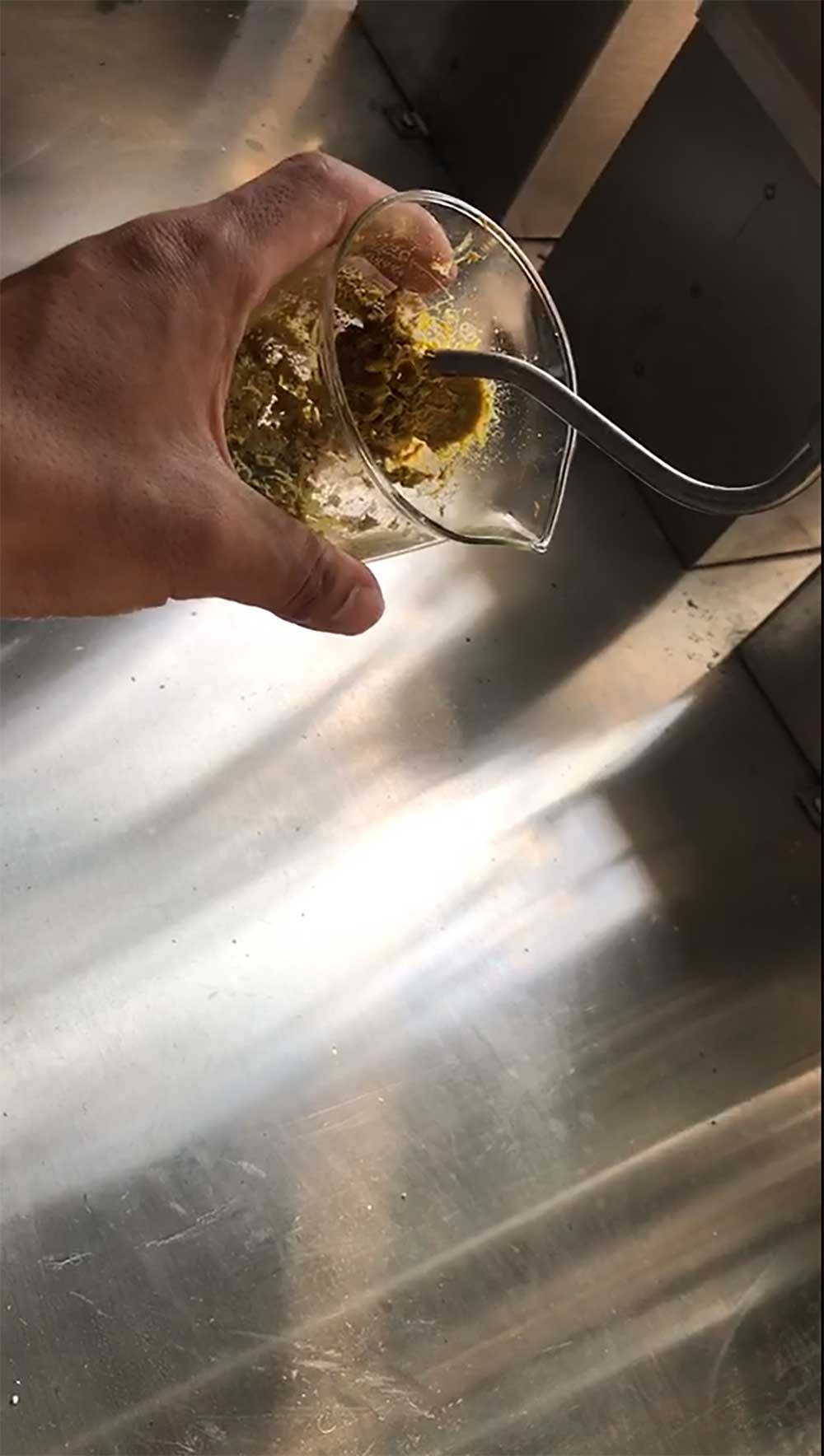HEMP / CANNABIS / CBD OIL SUPERCRITICAL CO2 EXTRACTION PROCESS GUIDE
How to extract cbd?
Cannabidiol (CBD) is a compound found in cannabis plants that have been garnering attention for its numerous therapeutic properties. Extracting CBD can be done using several methods, including CO2 extraction, widely regarded for its efficiency and safety. In this article, we will explain the CO2 extraction method for CBD oil, its benefits, and the optimal extraction conditions.
Feedstock Selection
Consider the strain of cannabis, such as indica, sativa, or hybrid, based on the desired effects and characteristics.
Evaluate the quality of the feedstock based on the grower’s practices, including pesticide/herbicide use, harvesting techniques, and storage methods.
Feedstock Type
Fresh material: Offers higher terpene content and flavor but requires quick processing and refrigeration.
Dried material: More readily available, stable, and lower in cost. The terpene concentration may be lower than fresh material.
Steps 1#: Preparing the Feedstock
- Bucking and Drying: Remove the flowers from the stems (bucking) and dry the biomass to less than 10% moisture content. Hanging the plants upside down in a controlled environment or using drying equipment (e.g., fluidized bed, rotary kiln, belt-driven infrared dryers) are common methods.
- Grinding: Break down the plant material into small, homogenous pieces using equipment like a food processor or industrial grinder. Ensure the grinding process is conducted in a well-ventilated area or a hood to minimize exposure to cannabis dust.
- Decarboxylation: Optionally, decarboxylate the material to convert acidic forms of CBD or THC into neutral molecules. This process involves heat and vacuum pressure and can be beneficial for extraction speed and terpene collection.
- Preparing Charges: Use a tube and charge sleeves to create consistent charge sizes for extraction. Weigh and fill the charge sleeves with ground cannabis, ensuring there are no air pockets. Seal the sleeves for storage until ready for extraction.
Steps 2#: Extraction Process


Supercritical CO2 Extraction: Load the extraction vessel with the prepared biomass. Use CO2 from supply cylinders to bring the vessel to working pressure. Adjust pressure and temperature based on the desired extraction goals. Pass the supercritical CO2 through the extractor containing the plant material to extract the desired compounds.
Separation: After extraction, separate the CO2 and the extracted compounds in a series of separators. The extracted compounds are collected while the CO2 is recycled in the system.
- Load the extraction vessel with the prepared biomass.
- Bring the vessel to working pressure using CO2 from supply cylinders.
- Create supercritical CO2 fluid by adjusting pressure and temperature based on extraction goals.
- Pass the supercritical CO2 through the extractor containing the plant matter to extract compounds into the solution.
- Separate the solvent (CO2) from the solution in separators, allowing CO2 to evaporate and condense for recycling.
- Depressurize the system by releasing CO2 through separators.
- Additional processes like dewaxing, distillation, and isolation may be performed to further refine the extract.
Steps 3#: Dewaxing, Distillation, and Isolation
- Dewaxing (Winterizing): To remove heavy waxes, dissolve the extract in food-grade ethanol and cool it to -20ºC. Filter out the precipitated wax.
- Distillation: Further process the extract through distillation to separate different compounds based on their boiling points and obtain purified fractions.
- Isolation: Isolate specific cannabinoids or compounds through additional refining techniques such as chromatography or crystallization.
Advantages of CO2 Extraction for CBD Oil
There are several noteworthy advantages to using CO2 extraction for CBD oil.
Safety
CO2 is non-toxic, non-flammable, and environmentally friendly compared to other solvents regularly used in oil extraction. By ensuring only CO2 is used during the extractions, products are cleaner and safer for human consumption.
Efficiency
Specialized equipment used in supercritical CO2 extraction has a higher throughput than other methods, allowing it to handle more plant material in less time.
Quality
CO2 selectively targets cannabinoids, leaving behind other constituents of the plant material. This results in a highly concentrated, pure extract that is free of any additional matter and unnecessary plant compounds.
Sustainability
Using CO2 in the extraction process is highly sustainable compared to other solvents that produce higher chemical waste.
Optimal Parameters for CO2 Extraction of CBD Oil
Optimizing the following parameters during the CO2 extraction process is a critical factor in its success:
| Process Parameter | Value |
|---|---|
| Temperature | 35-50°C |
| Pressure | 200-500 bar |
| CO2 Flow Rate | 20-50 kg/h |
| Extraction Time | 1-3 hours |
| Yield | 5-15% |
The optimal temperature for the supercritical CO2 extraction of CBD oil is between 35-50°C, while the pressure range should be between 200-500 bar. The CO2 flow rate should be around 20-50 kg/h, and the extraction duration should take between 1-3 hours. By using these parameters, one can achieve a yield of CBD oil between 5-15%.
Comparison of CO2 Extraction to Other Methods
When compared to other methods of extraction, CO2 extraction boasts edge advantages.
| Parameter | CO2 Extraction | Ethanol Extraction | Hydrocarbon Extraction |
|---|---|---|---|
| Safety | Non-toxic, non-flammable, and environmentally friendly | Flammable and toxic | Highly flammable and toxic |
| Efficiency | High efficiency | Moderate efficiency | High efficiency |
| Quality | High-quality product | May require post-processing | May require post-processing |
Compared to ethanol and hydrocarbon extraction, CO2 extraction is far safer for human consumption as it has no risk for any harmful residues to contaminate the CBD oil extract. While ethanol and hydrocarbon extraction methods are highly efficient, they require more post-processing in order to create a high-quality product.
CBD Crystals or THC Crystals
How to make isolate: CBD crystals are made by precipitation in a nonpolar solvent, which involves dissolving distillate into the solvent, cooling the solvent down to induce precipitation of CBD, washing the crystals, and then removal of the nonpolar solvent. When using jacketed stirred reactors, crystallization and precipitation processes can be used to produce several hundreds of kg of crystal CBD isolate.
Just like in the winterization process, the amount of solvent used is less than when compared to the solvent required for extraction. Crystal production rooms can be designated as separate control areas, making the amount of solvent in the room and building more manageable.
THC crystals are made by similar precipitation. Typically, an ethanolic extract is subjected to very low temperatures thus causing precipitation of the crystals. Just like CBD crystals, they’re washed, and then the solvent is removed.
Conclusion
In summary, the CO2 process for extracting CBD oil from hemp or marijuana is a highly efficient and effective way of obtaining pure, high-quality CBD oil. The process of using CO2 for extraction is entirely non-toxic, environmentally friendly, and sustainable. By utilizing optimal parameters in the extraction process, one can ensure a high yield of CBD oil that is both safe and high-quality for human consumption.